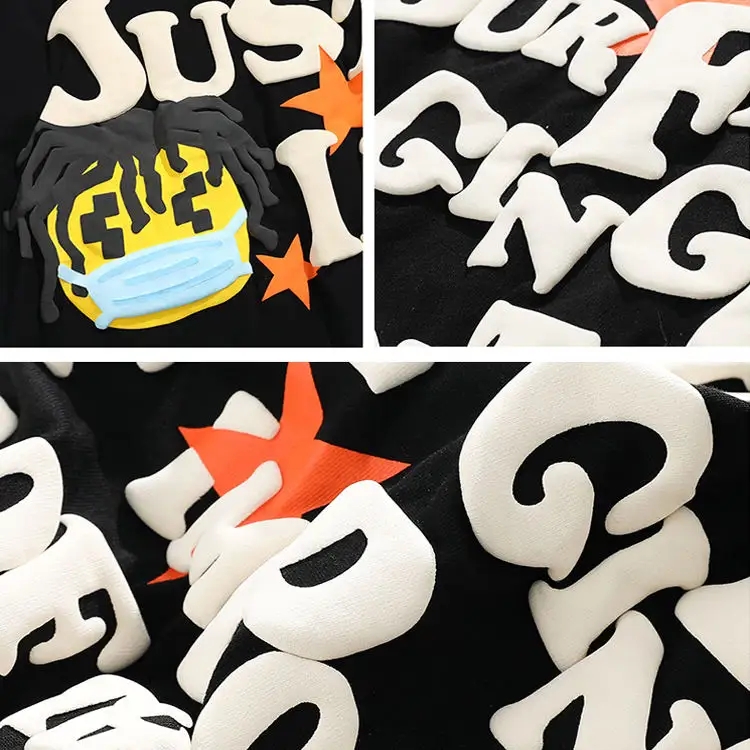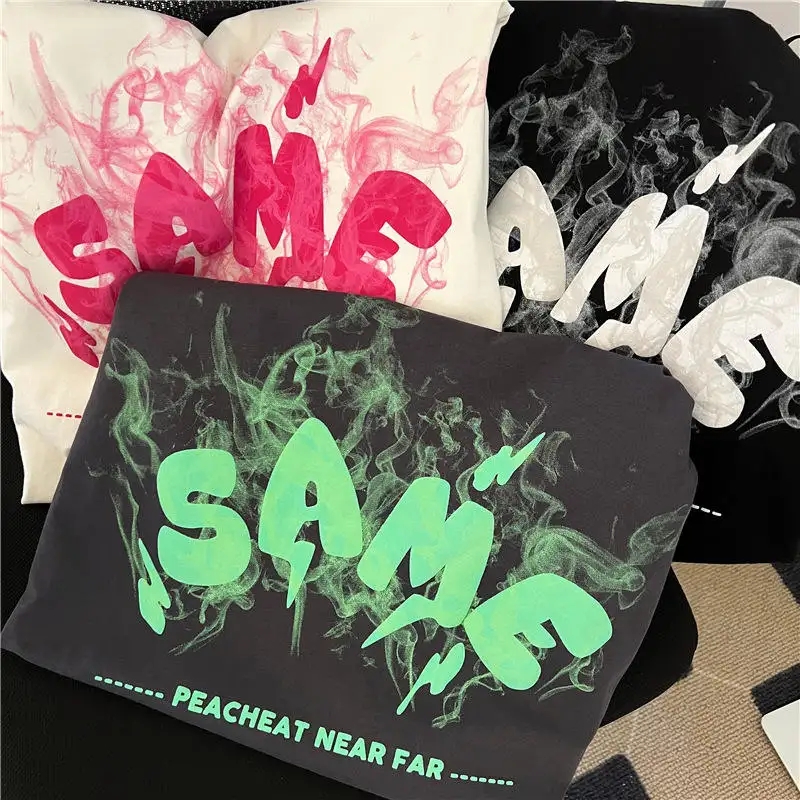Foam printing is also called three-dimensional foam printing, because of its post-press effect, it is very similar to flocking or embroidery in a unique three-dimensional style, with good elasticity and soft touch. Therefore, this process is widely used in garment printing, socks printing, tablecloth printing, and the field of piece printing for other purposes.
The main raw materials of foam printing: thermoplastic resin, foaming agent, coloring agent and so on.
Taking clothing foam printing and socks foam printing as examples, the foaming process principle used is physical foaming. When the microcapsule resin mixed into the printing paste is heated, the resin solvent forms a gas, and then becomes a bubble, and the volume increases accordingly. This is the principle of foam printing that we usually come into contact with.
Pattern requirements for foam printing
(1) Foaming printing effect, suitable for hosiery products, can also be designed on clothing cut pieces, and can also be combined with other flat patterns that do not require foaming to make a set of printing patterns. Outline the three-dimensional outline on the general flat pattern. Or use foam printing on the key prominent parts of the flat pattern to give people a relief effect.
(2) On the clothing pieces, the space for the foam printing design can be larger. It is not limited by the size of the area and the light source of the color. Sometimes all patterns on the sheet are foam printing, and the three-dimensional effect is very obvious, like cartoon patterns on children’s shirts, advertising trademarks, etc.
(3) Foaming printing patterns on printed fabrics should be mainly scattered and small, giving people an embroidery-like feeling. If the area is too large, it will affect the hand feel. If the area is too small, the foaming effect is not ideal. The color should not be too dark. White or medium light color is suitable.
(4) Foaming printing should be arranged in the last color printing when multiple sets of colors are co-printed, so as not to affect the foaming effect. And it is advisable to use a cold platen to prevent the printing paste wall net.
Although the foam printing technology has a long history, with the continuous development of new textile products, the foam printing has developed greatly. It has developed a sparkling pattern on the basis of the original single white foam and colored foam. Pearlescent foam printing, golden light foam printing and silver light foam printing and other technologies can make textiles not only have the three-dimensional effect of foam printing, but also produce the precious and elegant artistic sense of jewels or gold and silver jewelry.
Foaming printing sequence: foaming slurry screen printing→low temperature drying→drying→foaming (hot pressing)→inspection→finished product.
Hot press foaming temperature: usually 115-140 ° C, the time is roughly controlled in 8-15 seconds is advisable. But sometimes due to the different formulations of the foaming pulp, the pressure of the pressing machine can be used flexibly.
Precautions for foam printing: After the foam printing paste on the printing pad is screen-printed, the printing surface to be foamed must not be baked at high temperature for a long time, otherwise there will be uneven foaming and printing defects caused by early heating. When drying, it is generally controlled within 70°C, and the dryer should not stay in the same foam printing part for a long time to bake.
The proportion of foaming agent in the foaming printing paste should be tested according to the actual material of the printing material supplier. When high foaming is required, add more foaming material in an appropriate amount, and reduce the amount appropriately when foaming is low. It is difficult to give a predetermined formula , more is the accumulation of operating experience and technology!
Post time: Jun-01-2023





